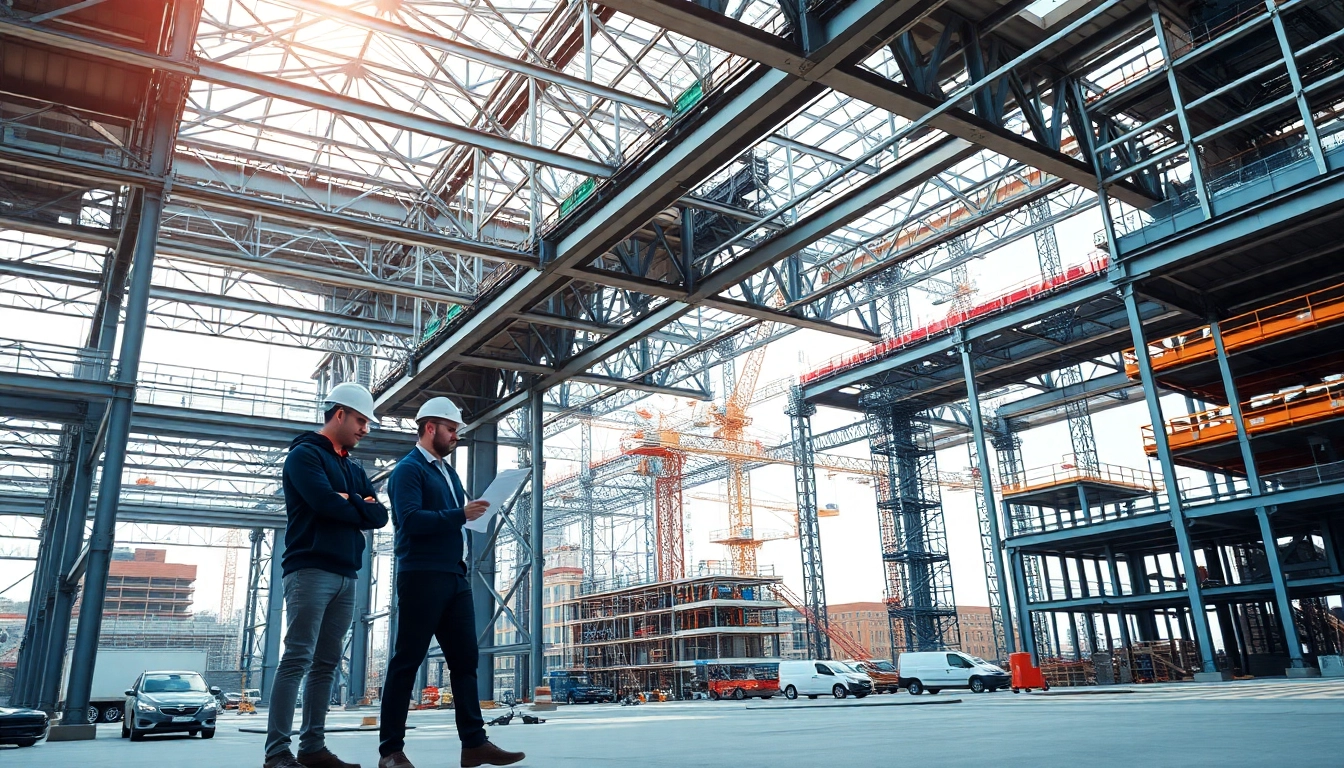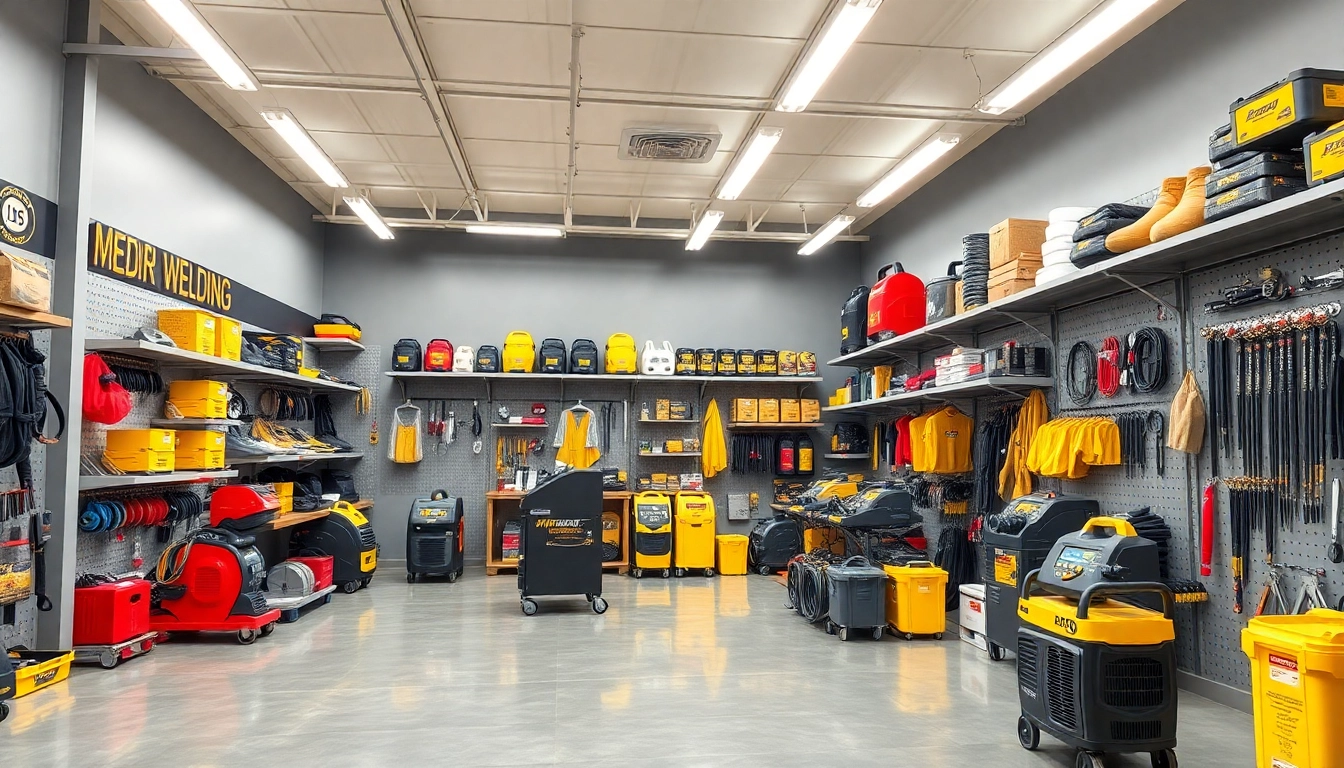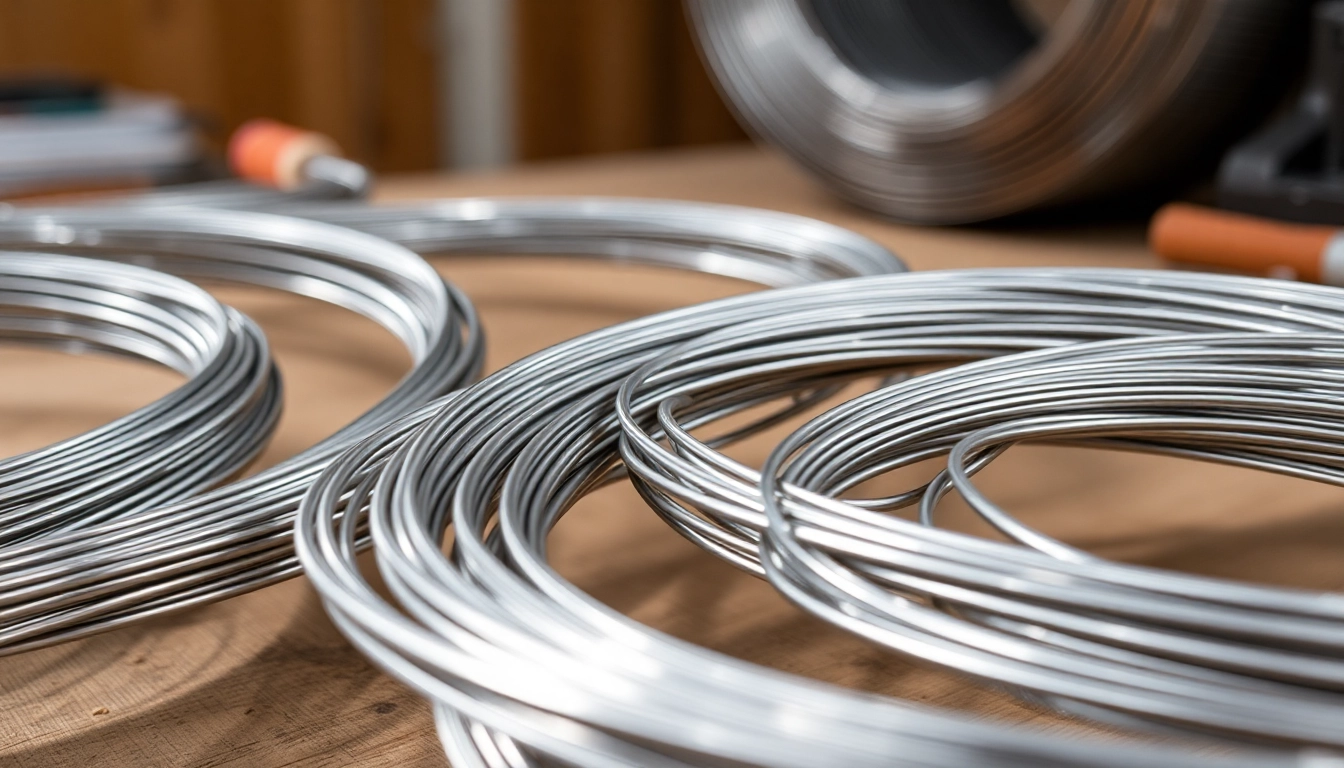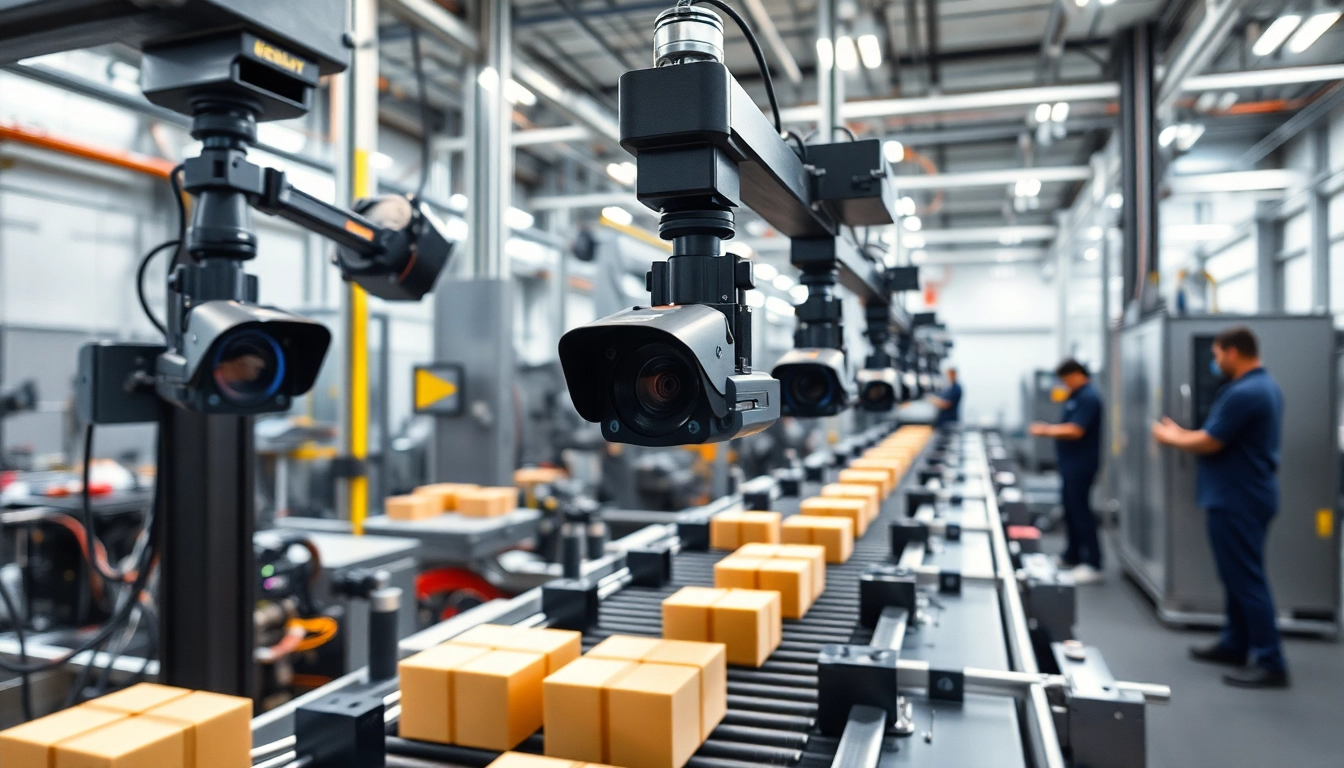Understanding Steel Structure Design Basics
Steel structure design is a vital area in the field of engineering that focuses on creating structures using steel materials for stability, strength, and durability. This type of design method is chosen for various constructions, such as commercial buildings, bridges, and industrial facilities. The modern architect and engineer must grasp the fundamentals of steel structure design to ensure safety, effectiveness, and efficiency in their projects. For more detailed insights into steel structure design, this guide will cover key principles, materials, applications, and step-by-step standards involved in the design process.
Key Principles of Steel Structure Design
The effectiveness of steel structure design hinges on several foundational principles. Here are the key concepts:
- Strength and Stability: Steel’s high tensile and compressive strength allows for the construction of tall structures while maintaining stability, essential for buildings and bridges.
- Serviceability: Structures must not only bear loads but also ensure comfort and usability without excessive deflection or vibration.
- Durability: Steel structures should provide longevity through resistance to environmental factors such as corrosion, fatigue, and seismic impacts.
- Economical Use of Materials: Efficient design minimizes waste while supporting necessary loads, contributing to cost-effectiveness and sustainability.
- Modular Design: Versatility in modular design encourages prefabrication and quick assembly, streamlining the construction process.
Materials Used in Steel Structure Design
Understanding the materials involved in steel structure design is crucial for selecting the appropriate type for specific applications. Key materials include:
- Structural Steel: This is the most commonly used material in steel structures due to its strength and versatility. Grades of structural steel include S235, S275, and S355, each differing in yield strength.
- Cold-formed Steel: Often used for lighter applications such as residential structures and roofing, cold-formed steel offers a cost-effective solution with adequate strength.
- Steel Reinforcement: To enhance concrete structural applications, steel reinforcement bars (rebar) provide tensile strength in concrete beams and slabs.
- Coatings and Treatments: Protective coatings and galvanization treatments are crucial to prevent rust and maintain the structural integrity of steel components.
Common Applications of Steel Structure Design
Steel structure design applies across various sectors and applications due to its innate properties. Common uses include:
- Commercial Buildings: From skyscrapers to shopping malls, steel structures allow for expansive spaces and flexible layouts.
- Industrial Facilities: Warehouses and manufacturing plants benefit from the strength and scalability steel provides.
- Bridges: Steel’s strength-to-weight ratio makes it ideal for large bridges requiring robust spans.
- Residential Structures: Increasingly, steel frames are used in homes for their durability and efficiency in construction.
- Sports Stadiums: The capability of steel structures to create vast open spaces makes them perfect for stadiums and arenas.
Design Process and Standards for Steel Structures
The design process for steel structures is systematic and must comply with various standards and codes. Understanding the design steps is essential for engineers and architects alike.
Steps in the Steel Structure Design Process
The design of steel structures can be broken down into several comprehensive steps:
- Client Requirements: Gathering information from clients about their needs, budget, and timelines is fundamental to creating functional designs.
- Conceptual Design: This phase involves drafting initial designs, considering aesthetics, layout, and accommodation of all required functionalities.
- Load Analysis: Engineers must determine the multiple loads acting on the structure (dead loads, live loads, wind loads, and seismic forces) to perform adequate calculations.
- Material Selection: Based on load analysis and design criteria, the appropriate materials are selected for various structural components.
- Detailing and Drafting: Final drawings and specifications are created to guide the construction and fabrication processes.
- Compliance Checks: Ensuring the design meets building codes and standards before moving to construction is essential for safety and legal compliance.
Building Codes and Regulations in Steel Structure Design
Building codes and regulations ensure that structures are safe and reliable. Key guidelines include:
- International Building Code (IBC): The IBC provides minimum regulations for building safety and structural integrity.
- American Institute of Steel Construction (AISC) Standards: AISC standards guide practices in steel construction, encompassing design, safety, and durability considerations.
- Local Regulations: Regional laws may impose additional requirements that must be adhered to, including zoning laws, environmental impact assessments, and safety protocols.
Software Tools for Effective Steel Structure Design
The advent of technology has revolutionized the steel structure design process. Key software tools utilized in the industry include:
- AutoCAD: Widely used for drafting two-dimensional and three-dimensional designs, AutoCAD helps visualize structural layouts effectively.
- STAAD.Pro: This powerful software analyzes and designs structures subjected to various loads, ensuring safety and compliance with standards.
- Tekla Structures: A BIM (Building Information Modeling) software that provides real-time data to support steel detailing and construction processes.
- SAP2000: Used for performing linear and nonlinear analysis on structures, this software is known for its versatile capabilities in steel structure evaluation.
- Revit: Another BIM software, Revit is used for integrating multiple building processes, aiding in collaboration and design accuracy.
Challenges in Steel Structure Design
Despite its advantages, steel structure design encounters unique challenges that require innovative solutions and approaches. Understanding these challenges can better equip engineers in their projects.
Common Obstacles Faced by Structural Engineers
Among those challenges are:
- Cost Management: Rising materials costs and labor expenses can impact project budgets significantly, necessitating effective cost-control measures.
- Weather-dependent Delays: Steel construction can experience delays caused by adverse weather conditions affecting safety and work schedules.
- Design Complexity: As structures become more intricate, ensuring every detail functions correctly while adhering to safety standards becomes increasingly challenging.
- Effects of Corrosion: While steel is durable, its susceptibility to rust and corrosion can pose long-term durability challenges if not properly mitigated.
Mitigating Risks in Steel Structure Design
Engineers can implement several strategies to alleviate risks:
- Thorough Planning: Conducting proper risk assessments preemptively addresses potential issues, ensuring smoother project execution.
- Quality Control: Regular inspections during construction assist in identifying and correcting issues before they escalate.
- Continuous Training: Staying updated with technological advancements and best practices is crucial to overcoming engineering obstacles.
Case Studies of Challenging Steel Structure Designs
Real-world examples can illustrate how challenges have been addressed effectively:
For instance, the Sydney Harbour Bridge faced significant engineering challenge due to its massive scale and design constraints. The design team overcame these obstacles using innovative cantilevering methods, ensuring structural balance while maintaining aesthetic appeal.
Another example is the Burj Khalifa in Dubai, which employed advanced structural analysis techniques to support its extraordinary height. Utilizing high-strength concrete and steel, the design integrates innovative solutions to deal with wind loads and seismic considerations.
Innovations in Steel Structure Design
Ongoing innovations are redefining the landscape of steel structure design, introducing new materials, technologies, and sustainable practices that shape the future of construction.
Emerging Technologies Impacting Steel Structure Design
Several technologies are enhancing design methodologies and construction processes:
- 3D Printing: Increasingly adopted in prototyping and repair scenarios, 3D printing offers a way to create complex steel components with reduced waste.
- Building Information Modeling (BIM): Enhancing collaboration and improving data accuracy, BIM streamlines communication among contractors, designers, and clients.
- Smart Materials: These materials change properties in response to environmental stimuli, enabling structures to adapt and improve resilience.
Sustainability Practices in Steel Structure Design
Integrating sustainability in steel structure design is crucial for environmental responsibility:
- Recycling Materials: Steel is one of the most recycled materials globally, promoting sustainability through reuse in new constructions.
- Energy-efficient Designs: Incorporating green design principles reduces energy consumption in buildings, leading to lower environmental impact.
- Life Cycle Assessment: Evaluating the entire life cycle of a structure, from creation to demolition, informs decisions that minimize ecological footprints.
Future Trends in Steel Structure Design
As the construction industry evolves, several trends are emerging:
- Increased Automation: Robotics and AI are set to transform construction efficiency, allowing for precise fabrications and reducing human error.
- Integration with Renewable Energy: Future steel structures are likely to incorporate solar panels and wind turbines, making them self-sufficient in terms of energy use.
- Adaptable Spaces: Design flexibility will become paramount, allowing buildings to transform based on changing needs.
Measuring Success in Steel Structure Design
The effectiveness of steel structure designs is measured through various performance metrics to ensure safety, functionality, and quality.
Performance Metrics for Steel Structures
Understanding and applying performance metrics can guide improved designs:
- Load-Bearing Capacity: The structure’s ability to sustain designated loads is foundational for safety assessments.
- Deflection Limits: Maintaining allowable deflection levels prevents structural fatigue and enhances user comfort.
- Life Cycle Costs: Evaluating total costs over a structure’s lifespan, including maintenance and energy consumption, informs resource allocation.
Feedback and Continuous Improvement in Design
Incorporating feedback loops allows engineers to enhance design methodologies:
- Client Feedback: Engaging in dialogue with clients post-construction assesses satisfaction levels and identifies areas for improvement.
- Post-occupancy Evaluations: Gathering data on building performance and user experience can inform future design decisions and innovations.
- Audits and Inspections: Regular evaluations of existing structures contribute to ongoing improvements in safety and efficiency.
Real-world Examples of Successful Steel Structure Designs
Successful steel structures demonstrate the effectiveness of design principles and innovation:
The Eiffel Tower in Paris, an iconic example of steel structure design, showcases the material’s potential for both aesthetic appeal and structural integrity. Its lightweight structure contrasts with its towering height, serving as a lesson in achieving balance between form and function.
Another notable example is the Shanghai Tower, which utilizes a distinctive spiral shape to enhance stability against wind forces while showcasing renewable energy integration through wind turbines.



